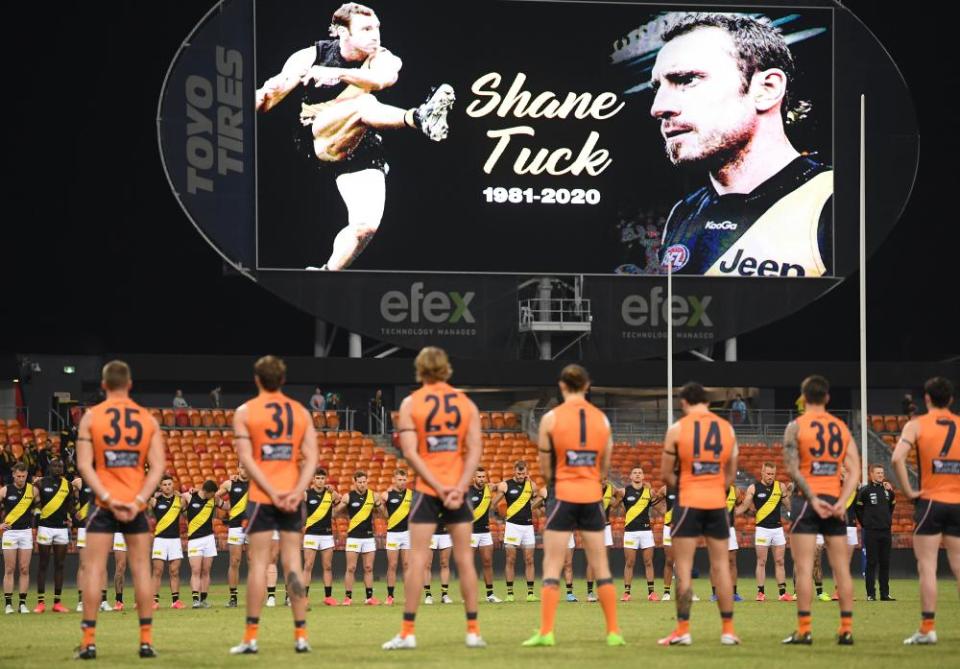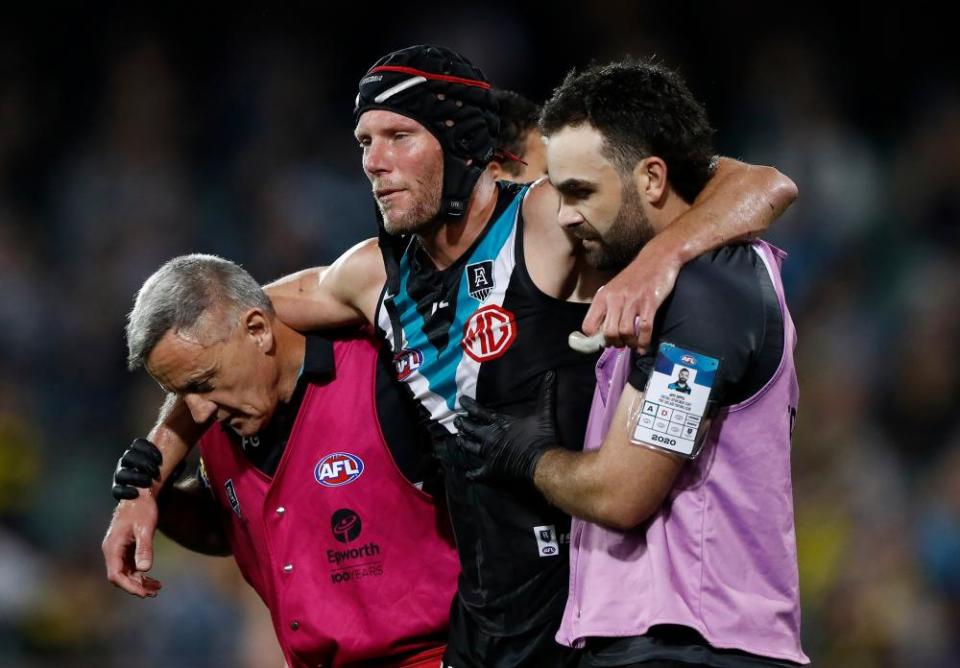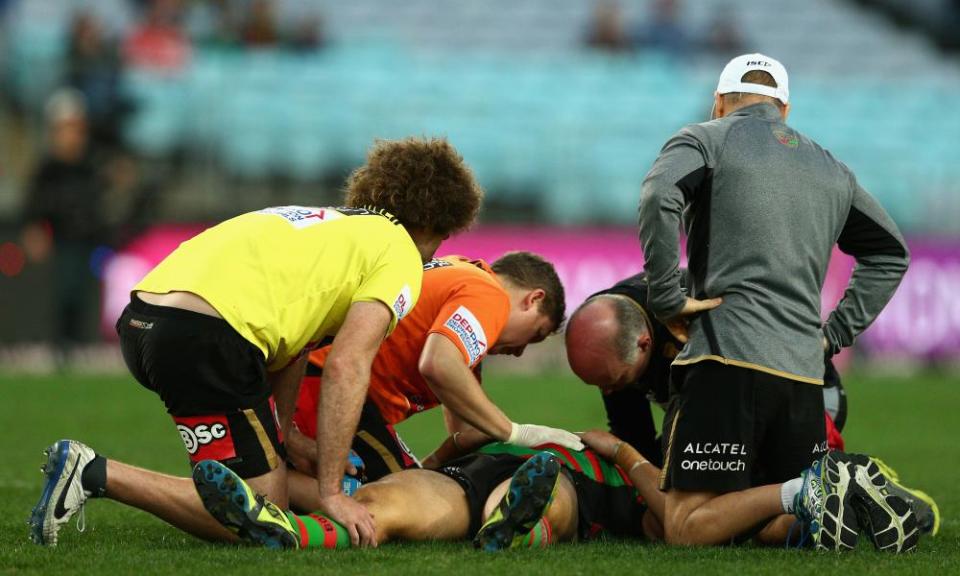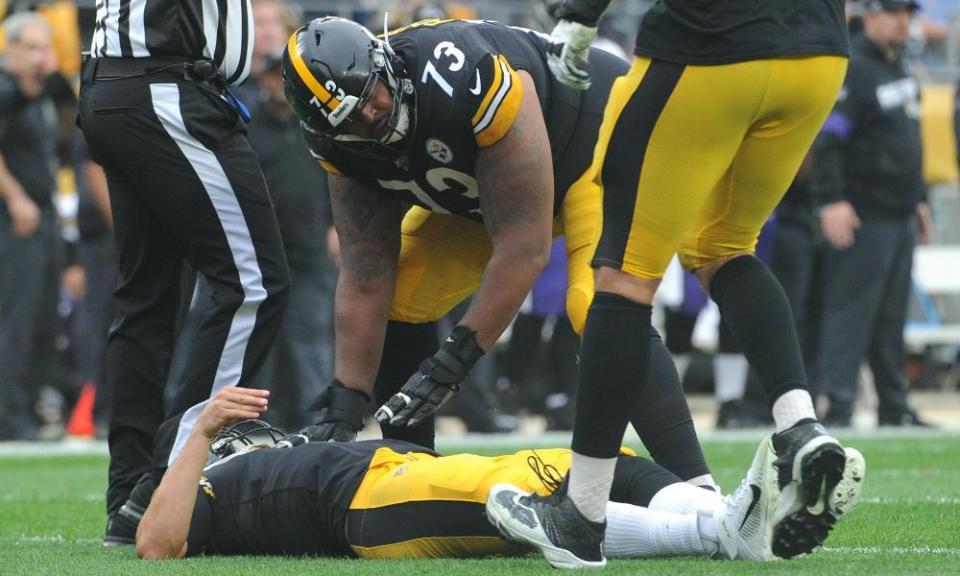Explainer: what we know about concussion in Australian sport
What is concussion?
A concussion is a temporary disturbance to brain function resulting from the transmission of force to the brain, often through impact to the head or other part of the body. This impact causes the brain to move back and forth inside the skull, and the delicate parts of the brain to stretch and tear. Symptoms include loss of consciousness, headache, dizziness, confusion, blurred vision, memory loss, difficulty concentrating, sensitivity to light and nausea or vomiting. While it is common for concussed person to be knocked out, it is a misconception that this is always the case.
There is mounting evidence that exposure to multiple concussions, despite an apparent return to normal function, may increase risk for remote neurological syndromes later in life.
What is chronic traumatic encephalopathy?
Chronic traumatic encephalopathy, or CTE, is a neurodegenerative condition linked to repeated head traumas. Symptoms include cognitive impairment, impulsive behaviour, depression, suicidal thoughts, short-term memory loss and emotional instability. A CTE diagnosis can only be made at autopsy.
What is the relationship between CTE and concussion?
CTE is a rare disorder that is not yet well understood, and has a complex relationship with concussion. CTE is commonly understood as a consequence of repeated head trauma, which includes concussion but also includes sub-concussive blows – that is, bumps, tackles or falls that do not result in observable symptoms but nevertheless damage the delicate parts of the brain.
Does this mean symptoms do not offer conclusive evidence of brain damage from head knocks?
In short, yes. The standardised international tool for evaluating concussions in sport, called the SCAT5, cannot comprehensively measure the risk for long-term brain damage. The SCAT5, which includes immediate on-field testing by a trainer and subsequent off-field head injury assessment (HIA), does not test for subclinical concussions.
What is a subclinical concussion?
Trauma to the brain which can be devoid of signs or symptoms but still cause acute neurological deterioration. This was the case with the late former AFL player Shane Tuck, who was found to have had severe CTE when he took his own life last year.
There has been a push to identify biomarkers as a means of developing rapid point-of-care diagnostics that can pinpoint asymptomatic damage to the brain on the sideline immediately after a direct or indirect head knock has occurred.

How long should a concussed player be sidelined?
Emerging research suggests recovery from concussion takes 28-30 days or more.
What do we know about the difference between men and women?
This is still unclear. In March, a UK-based neuropathologist said women and girls face double the risk of concussion and developing brain injuries from playing sport. There is also a school of thought that muscular-skeletal differences between genders mean, among other things, that men are better able to brace their heads on impact.
Other scientists remain unconvinced, largely because it is difficult to extricate sociological issues from the data, like research which suggests women may be more likely than men to report their symptoms.
What is the AFL’s current position?
The AFL says it takes concussion seriously and has ramped up its efforts in recent times to address the issue. In January, the league issued new guidelines around head trauma, with AFL and AFLW players now to be sidelined for at least 12 days if they suffer a concussion – a doubling of the previously mandated six days. It is also embracing technology in the rollout of two major concussion projects during the 2021 season in an effort to better understand head trauma, and has pledged to invest $1m a year for 10 years into concussion-based research. This week, two new roles to lead development, research, education, innovation and governance of the AFL’s concussion strategy were announced. At the same time, updated guidelines for community football were issued, mirroring the professional games’ 12-day stand-down rule.

What about rugby league?
Like the AFL, the NRL regularly states the safety of its players is a priority. If a player is concussed, he or she can only return to play or train once granted clearance by a doctor – and then a graduated return to play program should be followed – but there is no league-mandated period of inactivity. In January, the NRL refused to rush to follow the AFL’s lead on the 12-day rule, expressing concern over the potential for players or coaches to cover up any head injuries in a bid not to be forced to miss any action. The NRL said at the time it would establish its own panel of experts to review concussion protocols and in March announced a reshuffle of its medical department, expanding its advisory panel to include specialist doctors in, among other things, neurology.
Related: Hidden toll on NRL players in spotlight after spate of head knocks | Emma Kemp
The league supports the Concussion in Sport Australia position statement, which claims “there is currently no reliable evidence clearly linking sport-related concussion with chronic traumatic encephalopathy” and therefore “the link between sport-related concussion and CTE remains tenuous”.

At grassroots level, protocols have been tightened and rugby league players over 19 years old face an 11-day stand-down period and can only return to play after getting medical approval. For youth players aged 18 and under, the stand-down period is a minimum of 14 days and medical clearance to return is also required.
And rugby union?
Rugby Australia’s protocol incorporates the World Rugby concussion guidelines, which include a six-stage, graduated return-to-play protocol. There is no set timeframe for its completion; the average time for a player in the English Premiership in 2018-19 was 22 days.
In March, World Rugby announced a mass study of more than 700 male and female amateur rugby union players – from adults to under-13 level – into what happens to the brain during head impacts. The governing body will also trial eye-tracking technology which can help the detection and management of concussion.
And other collision-based sports?
The link between heading footballs, concussion and dementia has been clearly made and prompted a campaign to revamp the sport’s approach.
The boxing industry has yet to properly address the risks associated with any form of repeated brain trauma that is not caused by a direct knockout. World governing bodies, such as the World Boxing Association, stipulates a 60-day stand-down period for an “actual knockout” and six months for a second knockout in within the next three months. Boxing Australia “supports the thrust” of the Concussion in Sport Australia Position Statement. Sugar Ray Robinson, Joe Louis, Gary Goodridge and Muhammad Ali were a few of many boxers thought to have had CTE.

Where does Australia stand in relation to the rest of the world?
In terms of understanding the long-term implications of repeated head knocks, Australia lags well behind some other big sporting countries, in particular the United States, where there is significantly more financial and infrastructural support for research into CTE.
In the NFL, the issue of concussion has long been a major talking point. In response to a class action lawsuit filed on behalf of thousands of former players in 2012, the NFL settled for US$1bn, a figure which has since inflated. The competition’s concussion protocol was developed in 2009 and has been amended periodically since. The US has also established laws in many states aimed at risk mitigation in youth sport.

 Yahoo Sport
Yahoo Sport 





































